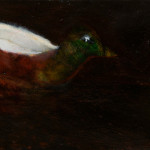- 2010 oil on Belgian linen 152 x 152cm, Sold
- 2010 oil on Belgian linen 152 x 152cm, Sold
- 2010 oil on Belgian linen 152 x 152cm, Sold
- 2010 oil on canvas 150 x 180cm, Sold
- 2010 oil on Belgian linen 115 x 200cm, Sold
- 2010 oil on Belgian linen 90 x 90cm, Sold
- 2010 oil on Belgian linen 200 x 115cm, Sold
- 2010 oil on Belgian linen 122 x 122cm, Sold
- 2010 oil on canvas 25 x 25cm, Sold
- oil on Belgian linen 25 x 30cm, Sold
- 2010 oil on Belgian linen 90 x 90cm, Sold
- 2010 oil on Belgian linen 168 x 168cm, $35,000 (framed in oak)
- 2010 oil on Belgian linen 61 x 61cm, Sold
- 2010 oil on Belgian linen 152 x 152cm, Sold
- 2010 oil on Belgian linen 152 x 152cm, Sold
- 2010 oil on Belgian linen 180 x 300cm, Sold
- 2010 oil on Belgian linen 61 x 61cm, Sold
- 2010 oil on Belgian linen 150 x 150cm, $24,000
- 2010 oil on canvas 150 x 180cm, Sold
- 2010 oil on Belgian linen 90 x 180cm, Sold
- 2010 oil on Belgian linen 152 x 152cm, Sold
- 2010 oil on Belgian linen 90 x 90cm, Sold
- 2010 oil on Belgian linen 152 x 122cm, $19,000
- 2010 oil on Belgian linen 90 x 90cm, Sold
- 2010 oil on Belgian linen 61 x 61cm, Sold
- 2010 oil on linen 122 x 122cm, Sold
- 2010 oil on Belgian linen 152 x 152cm, $22,000
- 2010 90 x 90cm oil on linen, Sold
- 2010 90 x 90cm oil on linen, Sold
- 2010 oil on canvas 23 x 45cm, Sold
- 2010 oil on canvas 30 x 40cm, Sold
- 2010 oil on board 20 x 180cm, Sold
- 2010 oil on canvas 27 x 27cm, Sold
- 2010 oil on canvas 30 x 30cm, Sold
- 2010 oil on Belgian linen 152 x 152cm, $28,000
“Dunlop displays an ability to express through visual media profound sentiments that defy easy rationalisation. This seems to derive from an intuitive source that shifts from work to work, rather than a consistently regulated one. It is this almost poetic impulse that contributes to the tender beauty of these paintings, which is nevertheless tempered by his acknowledgement of dark, unknowable spaces that exist alongside it. Dunlop cites a drive through Victorian country towns during the ANZAC day period in 2010 as the spark of genesis for this exhibition. As an artist who for many years has sought to reinvigorate the still life genre, witnessing the floral wreaths laid at the base of stone monuments and noting the tension between the ephemeral, decaying wreaths and the solidity of the stone had a resonating impact. These rituals of the living to honour the dead have a kind of didactic function, a way of consistently reminding society about the horror of war in order to avoid its recurrence. Yet perhaps more important to their conveyance of meaning is the tragic beauty encapsulated by the slowly fading wreath, as though by the steady progress of time something once alive is reduced to dust, air and matter. These memorials form a gentle but pervasive metaphor for a greater context.” – Marguerite Brown, 2011
“Nature contains the elements, in colour and form, of all pictures, as the keyboard contains the notes of all music. But the artist is born to pick, and choose, and group with science, these elements, that the result may be beautiful – as the musician gathers his notes, and forms his chords, until he brings forth from chance glorious harmony.” – James McNeil Whistler, 1885
“A real artist is an artist like a dog is a dog” – Advice received from John Olsen


































